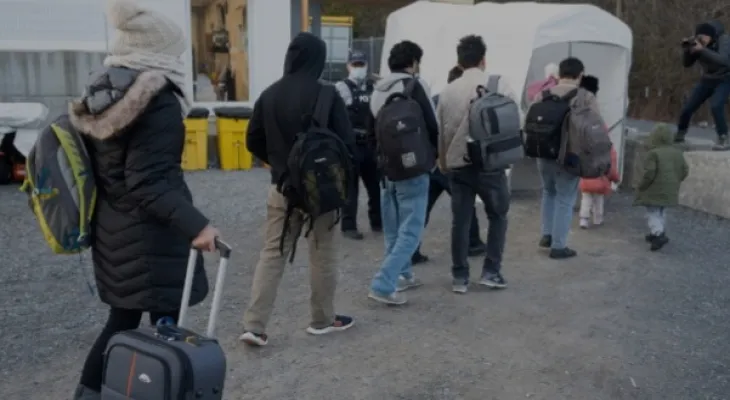Search here
Newspaper
Search here

Arab Canada News
News

Published: September 3, 2023
At first glance, the deal Canada struck this year to stop the flow of asylum seekers coming from the United States seemed to achieve quick success, as within days, the number of people caught at unofficial crossings along the border significantly diminished.
However, five months later, the total number of people applying for asylum in Canada has risen instead of falling. People working with migrants told Reuters that many are now coming by air while others are sneaking across the border and hiding until they can apply for asylum without fear of being sent back.
Numbers also illustrate how difficult it is for countries to close their doors to the desperate and the challenge that unexpected numbers of asylum seekers can pose; in Toronto, hundreds slept on the streets this summer while struggling to find shelter.
For her part, Shona Labman, associate professor and interim director of the Human Rights Program at the University of Winnipeg, said: "The bottom line is that closing borders does nothing to address the need for protection. It only serves to increase desperation."
Canada prides itself on welcoming migrants and aims to bring in a record half a million new permanent residents in 2025 to address a severe labor shortage. Yet it has sought to deter asylum seekers through a deal with the United States in which each country agrees to send back asylum seekers.
However, last year alone, more than 39,000 asylum seekers entered Canada via unofficial crossings—most into Quebec via a dirt path off Roxham Road in New York—prompting the province to complain about its inability to handle the influx. Asylum seekers are attracted to Canada’s reputation for processing asylum claims more quickly and accepting them more readily compared to the United States.
In response, in March, Canada and the United States amended the two-decade-old asylum seeker agreement, known as the Safe Third Country Agreement. The agreement now applies across the 4,000-mile land border between the two countries, not just at ports of entry.
The expanded agreement also led to a significant drop in the number of people intercepted at unofficial crossings—down to a double-digit figure in April and July from 4,173 in March.
But overall, the number of asylum seekers entering Canada has increased. The total number of asylum applications filed in Canada in July rose to 12,010—the highest monthly total since at least January 2017—up from 10,120 in March, according to data from the Immigration, Refugees and Citizenship Canada.
Demand for safety
Government data shows that some of the higher numbers are attributed to a rise in the number of people applying for asylum at airports or local immigration offices—often days, weeks, or months after their arrival in the country.
Applicants at airports accounted for about a third of the total asylum applications filed in July, compared to about 16% in March. Applications made to immigration offices comprised about 54 percent of the total in July, compared to roughly a third in March. The top five countries of origin for claimants in the first half of the year were Mexico, Haiti, Turkey, Colombia, and India—although the figures include those who applied before the expanded American agreement.
Some immigration experts have said part of the reason for the recent influx is that Canada is among a shrinking group of countries seen as providing safe haven while pressures from war, climate change, and human rights violations force more people to flee.
For instance, the European Union recently proposed an asylum agreement that allows countries to return some migrants more quickly. The British government is moving ahead with a law that facilitates sending asylum seekers to Rwanda, while the Biden administration has introduced a rule that makes it harder for migrants to obtain asylum if they cross the U.S. border illegally.
Craig Damian Smith, a research fellow at the Centre for Refugee Studies at York University, said: "If you’re someone trying to make this set of decisions, Canada becomes a more likely option."
Rémi Larivier, a spokesperson for the ministry, said in a statement: "The world is facing unprecedented flows of migrants and refugees, and Canada is not immune to these trends."
Larivier added that Canada revised the agreement with the United States to address "irregular" crossings and that the expansion "does not mean that asylum claims will never be made in Canada at all."
Comments